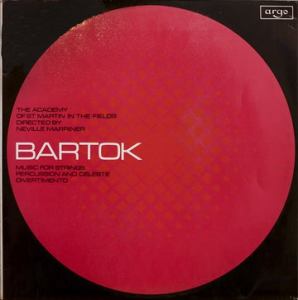 More of the music of Joseph Haydn (1732-1809)
More of the music of Joseph Haydn (1732-1809)
Reviews and Commentaries for the Music of Joseph Haydn
About 30 years ago I got hold of a Japanese pressing of Marriner conducting The Toy Symphony and was blown away by the quality of the sound. When listing the record for sale, I raved:
“DEMO QUALITY SOUND! This is the best sounding Toy Symphony you will ever hear!”
Now we know definitely that this is clearly not true.
We did the shootout in 2022 and found out that the best of the original EMI pressings are quite a bit better, a classic case of live and learn.
I believe I had at least one or two UK EMI pressings to play against the Japanese ones, but all the details of how I came to this conclusion — a proto-shootout, carried out long before I knew how to do a real one — are lost to the mists of time.
My stereo was dramatically less revealing back then, I had not learned how to clean records properly, and those two facts, combined with the underdeveloped listening skills that go with them, helped me to arrive at the wrong conclusion.
 No, the Japanese pressing, specifically targeted to audiophiles, or “soundphiles” if you like, is not superior to a properly mastered and pressed UK LP.
No, the Japanese pressing, specifically targeted to audiophiles, or “soundphiles” if you like, is not superior to a properly mastered and pressed UK LP.
If you have more than a handful of Japanese pressings in your collection, you can be sure that there is still plenty of room for improvement in your audio system.
An advanced system — the kind we are using today in our shootouts, and didn’t even exist back then — will quickly reveal the shortcomings of these formerly desirable pressings.
The Japanese pressings of this album are still good sounding, just not as good sounding as the real thing. For that reason we would not consider them stone age audio records. Perhaps Bronze Age Audio records is a better way to think about them.
Our Review from Many Years Ago
I discovered how good this Japanese EMI Soundphile Series recording is almost 20 years ago [that would have been in the early 90s]. In that time I can say that I think I may have run across at most two other copies. This is a tough one to find!
But it’s worth the effort, because all the little toys that play along with the music just JUMP out of the speakers. The recording is so transparent and the toys are so well miked it’s like hearing this work for the first time, or live.
This album can easily become a favorite Demo Disc — it has that kind of “you-are-there” sound. This recording was made at Abbey Road in 1976 under the direction of the two Christophers. Perhaps that accounts for the quality of the recording.
The Eine Kleine on side two is also very nice, although I wouldn’t say it’s world class the way The Toy Symphony is.
Further Reading


 No, the Japanese pressing, specifically targeted to audiophiles, or “soundphiles” if you like, is not superior to a properly mastered and pressed UK LP.
No, the Japanese pressing, specifically targeted to audiophiles, or “soundphiles” if you like, is not superior to a properly mastered and pressed UK LP.
